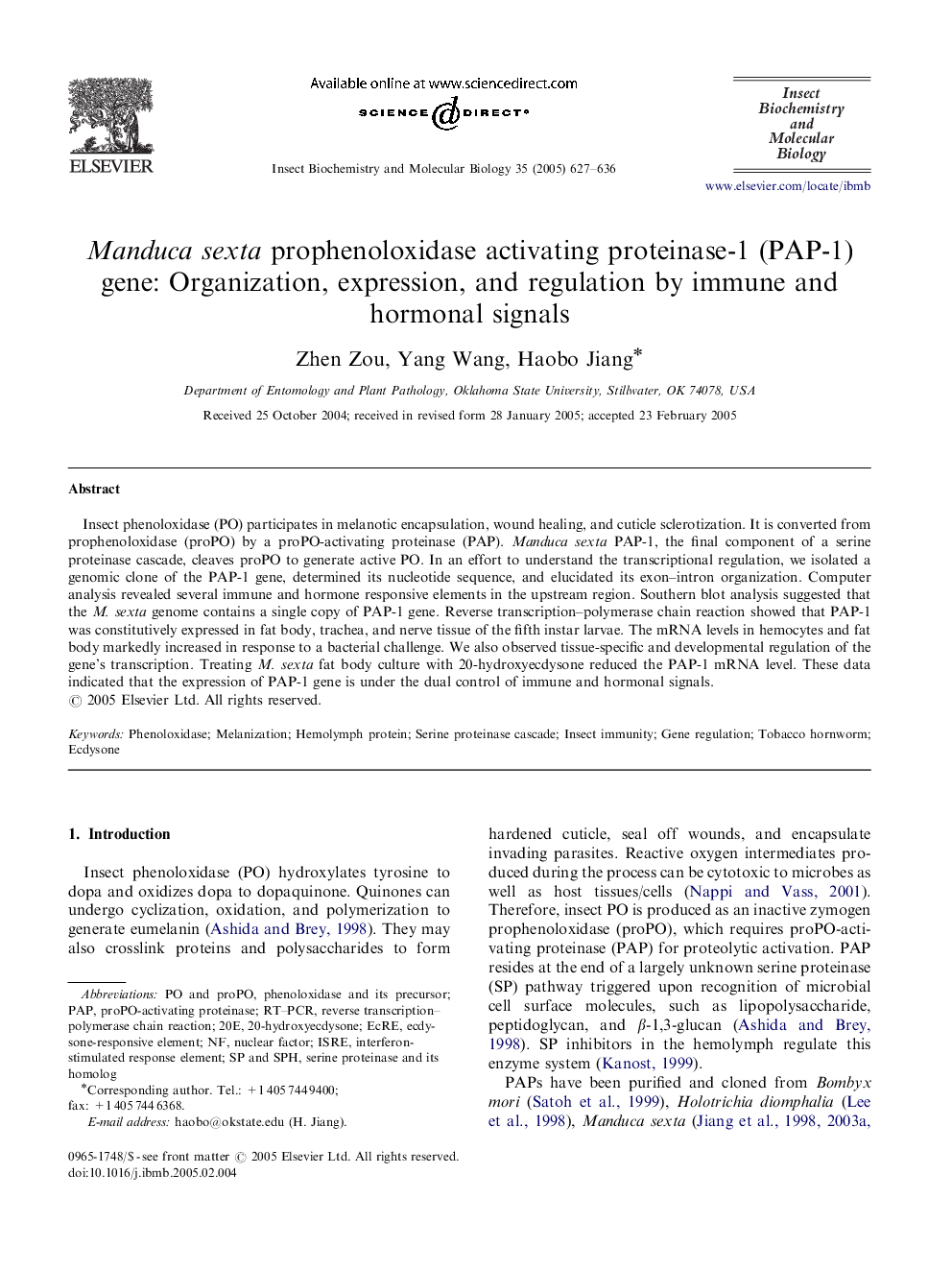| Article ID | Journal | Published Year | Pages | File Type |
|---|---|---|---|---|
| 10824551 | Insect Biochemistry and Molecular Biology | 2005 | 10 Pages |
Abstract
Insect phenoloxidase (PO) participates in melanotic encapsulation, wound healing, and cuticle sclerotization. It is converted from prophenoloxidase (proPO) by a proPO-activating proteinase (PAP). Manduca sexta PAP-1, the final component of a serine proteinase cascade, cleaves proPO to generate active PO. In an effort to understand the transcriptional regulation, we isolated a genomic clone of the PAP-1 gene, determined its nucleotide sequence, and elucidated its exon-intron organization. Computer analysis revealed several immune and hormone responsive elements in the upstream region. Southern blot analysis suggested that the M. sexta genome contains a single copy of PAP-1 gene. Reverse transcription-polymerase chain reaction showed that PAP-1 was constitutively expressed in fat body, trachea, and nerve tissue of the fifth instar larvae. The mRNA levels in hemocytes and fat body markedly increased in response to a bacterial challenge. We also observed tissue-specific and developmental regulation of the gene's transcription. Treating M. sexta fat body culture with 20-hydroxyecdysone reduced the PAP-1 mRNA level. These data indicated that the expression of PAP-1 gene is under the dual control of immune and hormonal signals.
Keywords
Related Topics
Life Sciences
Agricultural and Biological Sciences
Insect Science
Authors
Zhen Zou, Yang Wang, Haobo Jiang,
